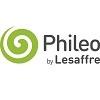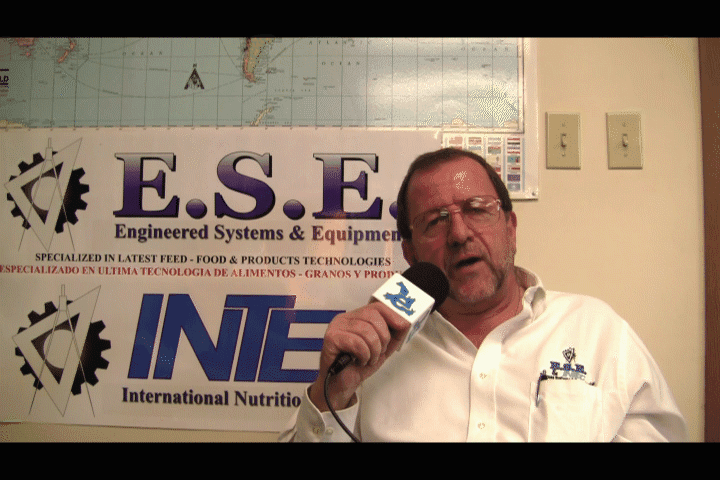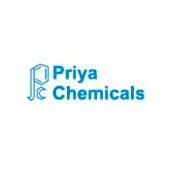Explore all the information on
Feed formulation
Welcome to the page about Feed formulation of Engormix; a source of knowledge on Feed formulation.
.jpg&w=3840&q=75)
Rick Kleyn (Consultant at Spesfeed) talks about egg size, quality, and protein levels in the diet, in this Engormix interview....
Comments : 0
Recommendations: 1
.jpg&w=3840&q=75)
Rick Kleyn (Consultant at Spesfeed) comments on levels of protein, energy, and phosphorus when formulating poultry diets, in this Engormix interview....
Comments : 0
Recommendations: 0
I. INTRODUCTION Non-starch polysaccharides (NSPs) are major components of dietary fibre found in feed ingredients that consist of both soluble and non-soluble polysaccharides. NSPs possess antinutritive properties that can hinder bird performance and alter gut physiology. These antinutritive properties include high gut viscosity, encapsulation of starch and amino acids, sticky droppings, modification of gut physiology, and an overall reduction in bird performance. Feed enzymes...
Comments : 0
Recommendations: 0
Tri-butyrin is regarded as an ideal molecule to supply both butyrate and mono-butyrin to the small intestine (SI) to maintain intestinal function, modulate the immune response and improve broiler growth performance (Moquet et al., 2016; Moquet et al., 2018). Valerins have been shown to positively affect the morphology of the SI mucosa and reduce the incidence of necrotic enteritis (Onrust et al., 2018). To date, little information is available as to the extent to which valerin and butyrin in...
Comments : 0
Recommendations: 0
In recent years, the egg industry is aiming to prolong the life cycle of laying hens, both for reasons of profitability and for sustainability. However, the goal to produce 500 eggs in a 100-week cycle is hindered by the declining performance of older hens. It is hypothesised that nutritional strategies can be implemented to support the health of these animals, thereby improving laying persistency. The objective of this trial was to investigate the effects of two sources of butyrate...
Comments : 0
Recommendations: 0
.jpg&w=3840&q=75)
Steve Leeson (Professor Emeritus, University of Guelph) talks about the evolution of the modern broiler and its response to energy and amino acids in diet formulation, as well as the impact of energy and fat on feed costs, in this Engormix interview....
Comments : 0
Recommendations: 1
.jpg&w=3840&q=75)
Steve Leeson (Professor Emeritus, University of Guelph) comments on the use of amino acids in broiler nutrition and the performance of low energy diets, in this Engormix interview....
Comments : 0
Recommendations: 0
.jpg&w=3840&q=75)
Steve Leeson (Professor Emeritus, University of Guelph) explains the advantages of Apparent Metabolizable Energy (AMEn) over other methodologies, and comments on the relevance of nitrogen retention in this Engormix interview....
Comments : 0
Recommendations: 3
I. INTRODUCTION Soybean meal (SBM) is the most important plant protein source in broiler diets. Although most of the proteins in SBM are highly digestible, some proteins including glycinin, protease inhibitors, and antigenic proteins are indigestible and can cause intestinal damage and impair immune functions resulting in sub-optimal growth performance (Pan et al., 2016). The supplementation of SBM with appropriate commercially available proteases provides a potential strategy to...
Comments : 0
Recommendations: 0
.jpg&w=3840&q=75)
Sudipto Haldar (Research Director at Agrivet) comments on the time it takes for phytogenics to work and how they impact the poultry microbiota, in this Engormix interview....
Comments : 0
Recommendations: 0
An increase in dietary phytate concentration may limit the availability of both phosphorus (P) and calcium (Ca) as a result of the progressive formation of Ca-phytate complexes along the gastrointestinal tract (Selle et al., 2009). However, inconsistent results were reported regarding the impact of phytate on P and Ca release in the presence of phytase with broilers, presumably due to the differences in phytase characteristics, bird age and feeding duration of P-deficient diets (Angel,...
Comments : 1
Recommendations: 1
I. INTRODUCTION Improved production efficacy in laying hens has been achieved by selecting individual birds that lay longer clutches of eggs (Dunn, 2013; Bain et al., 2016; Preisinger, 2018). In addition, the length of the productive life of hens has been extended to one hundred weeks of age or more. These 'long-life' layers were predicted to produce 500 eggs by 100 weeks of age (Bain et al., 2016; Hy-Line, 2020), and this is now being achieved commercially (Gautron et al.,...
Comments : 0
Recommendations: 1
Introduction In developing countries, the poultry industry is experiencing some critical issues with animal feed prices, which are unpredictable in the current scenario, as raw ingredients, primarily corn and soybean, have been increasing in price day by day (Alagawany and Attia 2015). As a result, there is a need to consider some low-cost resources, such as agricultural by-products and other crops, which are significantly less expensive than conventional feed stuff. As a result,...
Comments : 0
Recommendations: 1
Introduction Creatine (essential for energy metabolism) and glutathione (GSH; an important non-enzymatic antioxidant) are major metabolites of glycine [the simplest amino acid (AA)] in animals (Fig. 1). Specifically, arginine:glycine amidinotransferase (AGAT) and guanidinoacetate N-methyltransferase (GAMT) convert glycine into creatine in the presence of arginine and methionine, whereas γ-glutamylcysteine synthetase and glutathione synthetase catalyze the formation of GSH...
Comments : 1
Recommendations: 0
.jpg&w=3840&q=75)
Charles Starkey, VP of Scientific and Regulatory Affairs at the North American Renderers Association (NARA), speaks about the relationship between the concept of One Health and Rendering...
Comments : 0
Recommendations: 0
.jpg&w=3840&q=75)
Charles Starkey, VP of Scientific and Regulatory Affairs at the North American Renderers Association (NARA), talks about the benefits of rendering and sustainability...
Comments : 0
Recommendations: 0
.jpg&w=3840&q=75)
Charles Starkey, VP of Scientific and Regulatory Affairs at the North American Renderers Association (NARA), talks about the Lifecycle data on the sustainability of Rendered Products of Pet Food...
Comments : 0
Recommendations: 0
In the past, nutritionists did not pay attention to fibre in poultry feed formulations. Step by step the researcher as well as the industry in this decade has realised the importance of fibre in a poultry feeding strategy. The use of fibre in poultry has been, and still is, a major research topic at universities around the globe. Professor Mateos group from Spain as well as Prof. Svihus from Norway did a lot of research to explore the effect of different fibre sources on poultry health...
Comments : 4
Recommendations: 7
Shrimp are external masticators, meaning that they chew their feed outside their mouth and will not ingest the feed at once. Shrimp prefer soft pellets. Typically,...
Comments : 4
Recommendations: 0
Nelson Ruiz (Nelson Ruiz Nutrition LLC) A set of 24 solvent extracted commercial soybean meal (CSBM) samples, which corresponded to the same lots of CSBM used in the field, were evaluated. The CSBM were from different origins (Argentina, Bolivia, Paraguay, Trinidad & Tobago, U.S.). The objective herein was to evaluate the relationship between KOH protein solubility (KOHPS, a measurement of overprocessing) and trypsin inhibitor activity (TIA, a...
Comments : 7
Recommendations: 5



















